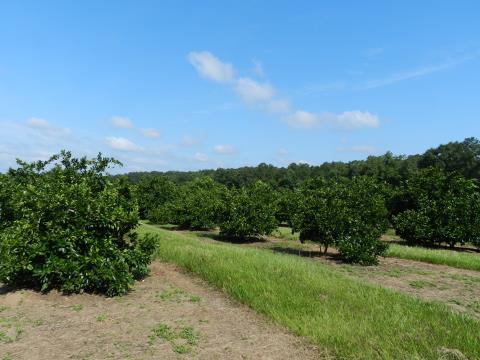Trees in the Sweet Valley Citrus region have been in high demand in recent years. Plantings of satsuma mandarins and other citrus varieties have steadily risen the past few years in Georgia, Alabama and North Florida.

(Photo by P.C. Andersen)
That steady climb is expected to stall this year, however.
Following the Christmas freeze event that rattled the industry in the Southeast in December 2022, growers are expected to take a wait-and-see approach with either expanding their farming operations or joining the industry as first-time growers.
“People now are straddling the fence, saying they want to see how severe the freeze killed back trees. Are we going to survive it? I think people are just going to sit and watch and see how much is going to be cut back and how much they’re going to respond to it,” said Clay Lamar. His family owns and operates 1 DOG Ventures, a citrus nursery in Sale City, Georgia, and Florida Line Nursery, located just north of Monticello, Florida.
This is in contrast to what he had experienced in previous years. “Demand was just steadily increasing, year after year,” Lamar said. “More and more people were seeing that we can do this. We can grow citrus here.”
Lamar was one of numerous citrus growers and industry members who attended the recent University of Florida Institute of Food and Agricultural Sciences Citrus Health Forum in Quincy. The forum focused on production in North Florida and the southern regions of Alabama and Georgia.
Various citrus varieties thrive in the Sweet Valley Citrus region. Satsuma mandarins comprise approximately 80% of the area’s citrus production. Others varieties include Tango, Shiranui, Cara Cara, Kishu, grapefruit and lemon. All were at risk, however, when subfreezing temperatures occurred during Christmas week. Lamar said his own trees fared pretty well.
Jonathan Oliver, University of Georgia assistant professor and small fruits pathologist, believes an exact understanding of the freeze impact will not be known for another couple of months.









